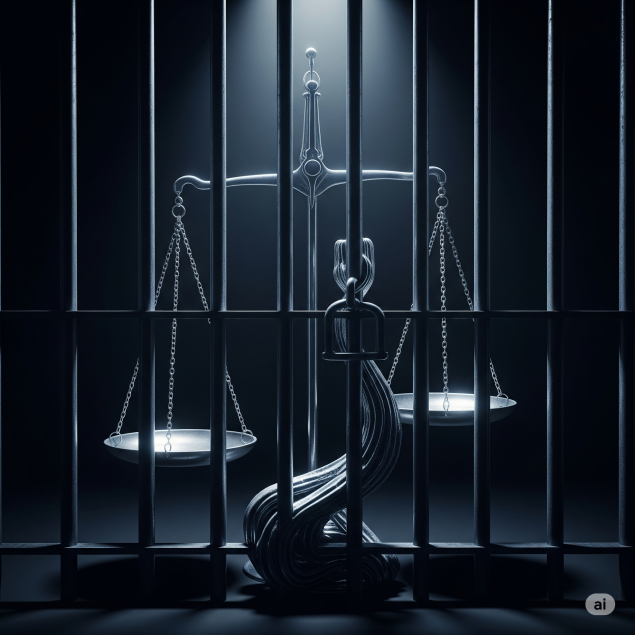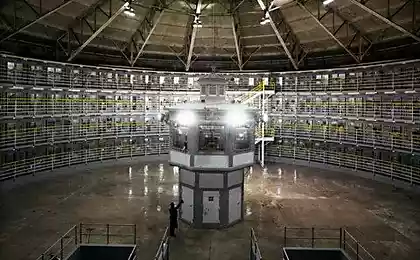158
Which country are you more likely to go to jail? Top 5 countries

Imagine a world where your chances of being imprisoned depend not only on your actions but also on geography. Some countries are literally “absorbing” their citizens into the prison system at an incredible rate. Today we will embark on a journey through statistics that may shock even the most prepared readers.
Why Conclusion Statistics Matter
The level of imprisonment in the country reflects not only the effectiveness of the law enforcement system, but also the socio-economic state of society, the quality of legislation and even cultural characteristics. When we talk about the number of prisoners per 100,000 population, we are actually measuring the state's appetite for incarceration as a method of solving problems.
It is important to understand that high incarceration does not always mean high crime rates. Sometimes this is indicative of rigid laws or an ineffective judicial system.
Methodology of research
To compile the ranking, we used data from the World Prison Brief, the Institute for Criminal Policy Research and official statistics from national prison services. The main indicator is the number of prisoners per 100,000 population as of 2024.
Top 5 Countries With Highest Incarceration Rate
5th place: Turkmenistan – 583 prisoners per 100,000 population
Turkmenistan’s authoritarian regime has created a system where even minor misconduct can lead to long-term imprisonment. Especially dangerous are any actions that can be interpreted as criticism of the authorities or an attempt to destabilize the regime.

4th place: Rwanda – 580 prisoners per 100,000 population
After the 1994 genocide, Rwanda built an extremely rigid system of justice. The laws of “genocide ideology” and “divisionism” are so widely interpreted that almost any utterance or action can fall under them.
3rd place El Salvador - 605 prisoners per 100,000 population
The war on gangs has turned El Salvador into a state of emergency. Mass arrests of gang members and suspects linked to them have led to overcrowding of prisons and the creation of mega-prisons housing tens of thousands of prisoners.
2nd place: Cuba - 794 prisoners per 100,000 population
Cuba's socialist system presupposes strict control over the population. Political prisoners, economic criminals, and even those who try to leave the country illegally are joining the ranks of prisoners. The risk is particularly high for entrepreneurs and activists.
1st place: U.S. 629 prisoners per 100,000 population
Paradoxically, the country of freedom leads in the absolute number of prisoners in the world - more than 2 million people. The system of private prisons, tough drug laws and the principle of “three strikes, you are out of the game” have created an industry of imprisonment that literally consumes people.
Risk Factors: What Increases Your Chances
Demographic factors
The statistics are inexorable: young men aged 18-35 make up the vast majority of prisoners in all countries. The risk is particularly high for members of ethnic minorities and people with low socio-economic status.
Types of crimes with high risk of imprisonment
In the United States, drug offenses account for about 45 percent of all incarceration in federal prisons. In El Salvador, being a gang member or even suspected of being a gang member can lead to life in prison. In Cuba, economic crimes, including trafficking, are punished particularly severely.

Practical recommendations for travelers
How to minimize risks
1. Check the local legislation before traveling. What is legal in your country may be strictly prohibited in another.
2. Avoid any narcotic substances. Even in liberal countries, tourists often receive harsher penalties.
3. Be careful with photography. Military installations, government buildings and even some religious buildings may be banned.
4. Follow the foreign exchange laws. Undeclared import or export of currency can lead to serious problems.
5. Keep insurance documents and contacts of a lawyer or consulate with you.
Economic consequences of mass imprisonment
High levels of incarceration create a vicious cycle. In the United States, it costs an average of $35,000 per inmate per year. At the same time, former prisoners face discrimination in employment, which increases the likelihood of recidivism.
If the United States were a separate country, it would rank 139th in the world in terms of population, ahead of countries like Estonia or Mauritius.
Alternative approaches to justice
Some countries take the opposite approach. Norway, with 49 prisoners per 100,000 population, focuses on rehabilitation rather than punishment. The result is one of the lowest relapse rates in the world.
Conclusion
Prison statistics reveal the underlying problems of societies and state systems. High rates do not always mean an effective fight against crime, but often indicate systemic problems in the approach to justice.
The best way not to go to jail in any country is to know local laws, respect local culture, and common sense. Statistics can be shocking, but knowledge is your best defense.
Glossary
Level of imprisonment Number of prisoners per 100,000 population, the main indicator for international comparisons of prison systems.
Relapse Repeated commission of a crime by a person who has previously committed a crime. The effectiveness of the re-education system.
Penitentiary system a set of institutions and bodies that execute sentences of deprivation of liberty and control the behavior of convicts.
Private prisons Correctional facilities operated by commercial companies under contract with the state. It is distributed in the United States and some other countries.
Preventive detention Detention of the suspect pending trial in order to prevent escape or commit new crimes.
Alternative penalties Types of punishments not related to deprivation of liberty: fines, community service, conditional conviction, electronic bracelets.























